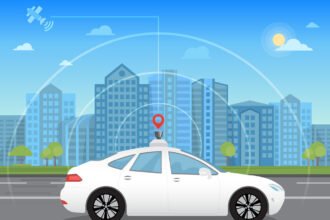In the October 4, 2009 edition of The NY Times “Sunday Business” section (“It’s Brand New, but Make It Sound Familiar“), Mary Tripsas, an associate professor at the Harvard Business School, writes about the challenge of finding the right consumer reference points for innovations. In a nutshell, consumers have a hard time figuring out innovation unless they can compare it to something that is more familiar. One example offered in the column comes from Arthur Markham, a professor of psychology at the University of Texas in Austin, is the less-than-blockbuster introduction of the Segway motorized personal transport device. In a similar vein, Dan Ariely (Predictably Irrational) argues that comparison is a fundamental process in consumer decision making.
Estimating demand for really new innovations may just be the most difficult endeavor in market research. A decade ago Robert Veryzer, Jr. identified six factors that make it difficult for consumers to react to innovation (”Key Factors Affecting Customer Evaluation of Discontinuous New Products,” Journal of Product Innovation Management, 1998, 15, 136-150). The first factor listed is “lack of familiarity with the product, with the way …
In the October 4, 2009 edition of The NY Times “Sunday Business” section (“It’s Brand New, but Make It Sound Familiar“), Mary Tripsas, an associate professor at the Harvard Business School, writes about the challenge of finding the right consumer reference points for innovations. In a nutshell, consumers have a hard time figuring out innovation unless they can compare it to something that is more familiar. One example offered in the column comes from Arthur Markham, a professor of psychology at the University of Texas in Austin, is the less-than-blockbuster introduction of the Segway motorized personal transport device. In a similar vein, Dan Ariely (Predictably Irrational) argues that comparison is a fundamental process in consumer decision making.
Estimating demand for really new innovations may just be the most difficult endeavor in market research. A decade ago Robert Veryzer, Jr. identified six factors that make it difficult for consumers to react to innovation (”Key Factors Affecting Customer Evaluation of Discontinuous New Products,” Journal of Product Innovation Management, 1998, 15, 136-150). The first factor listed is “lack of familiarity with the product, with the way in which the product is used, or with the underlying technology.” And one way consumers try to understand a discontinuous product is by comparison with things they already know about.
By and large, I think marketers and market researchers underestimate the fundamental role of comparison and contrast in the way we make judgments about products. As Professor Tripsas makes clear, humans (consumers included) rely on categorization to understand the world. Looking at a new, discontinuous product, we’re likely to ask, is it this or that?
A few years ago (not that many, but light years in terms of technology) I was involved in estimating the demand for large screen (greater than 30″/76 cm diagonal) LCD television. At the time, LCD TVs were just beginning to appear in retail stores in Japan and were not really on the market in the US. The primary research problem was creating some understanding among consumers about the features and benefits of LCD television. One approach to measuring demand is, of course, to present some description of the offer and ask consumers how likely they are to buy the product or service (as described, assuming availability) and applying some “shrinkage” factors to adjust for overstatement, market awareness, channel lag effects, and so forth. We took a different approach, embedding LCD television in a competitive context that included CRT (”picture tube”), plasma flat panel, and rear projection big screen TVs. We could present performance characteristics and other descriptors (including some graphics to allow consumers to evaluate the “form factor” for the different technologies) and comparative pricing.
We found – by using a “think aloud” pre-test – that the best way to implement this approach in a survey format was to mimic the kind of information that consumers would find in the market place, such as the comparison ratings found in publications like Consumer Reports. Once consumers received a little education about LCD television, we presented them with several simulated shopping scenarios in which prices and some of the performance characteristics of LCD television were systematically varied. Their responses were incorporated into a choice model that enabled some forecasting of the impact on demand of declining prices and improved performance of LCD television a few years out.
We also learned that, early on, form factor was the attribute driving much of the potential demand for LCD TV, especially among Asian and European consumers as they are likely to live in homes where space is at a premium.
Copyright 2009 by David G. Bakken. All rights reserved.






